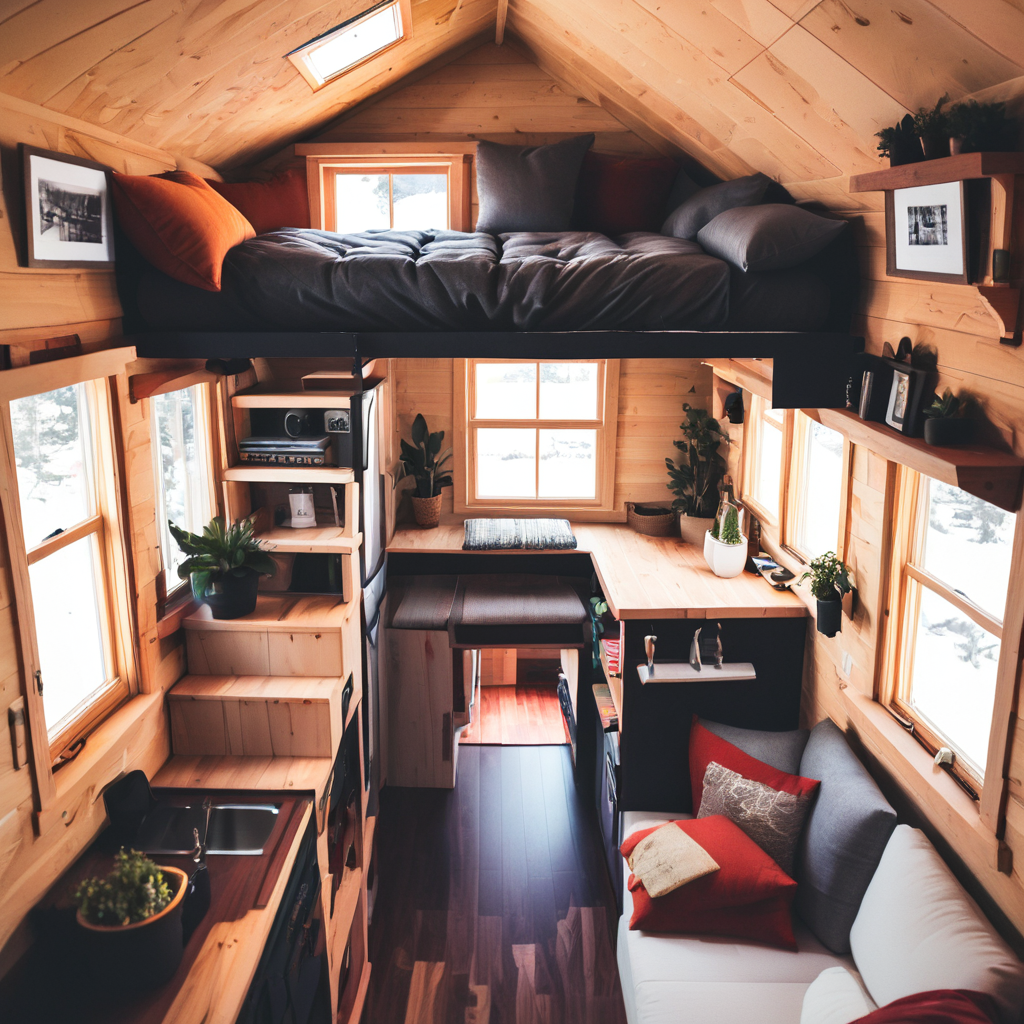
In an era defined by rapid technological advancement and an increasing awareness of environmental issues, the tiny house movement emerges as a beacon of futuristic living. These compact, innovative homes are not only redefining the concept of space efficiency but are also showcasing how we might live in a world that prioritizes sustainability, technology, and flexibility. Here’s why tiny houses could be considered a prototype of future habitats.
Sustainability at the Core
Tiny houses are inherently sustainable, requiring fewer materials for construction and less energy to heat and cool. This minimal environmental impact aligns with future expectations of green living, where conservation and ecological responsibility are paramount. Furthermore, many tiny homes are equipped with renewable energy sources like solar panels, composting toilets, and rainwater harvesting systems, making them nearly self-sufficient. As the world grapples with the challenges of climate change, the tiny house movement offers a blueprint for reducing our carbon footprint.
Technological Integration
The future is synonymous with technological advancement, and tiny houses are at the forefront of integrating technology into residential living. With limited space, the emphasis is on smart, multi-functional design. From foldable walls and retractable roofs to IoT-enabled appliances that offer unprecedented control and efficiency, tiny houses are living labs for technological innovation in the housing sector. This integration not only maximizes space and comfort but also hints at how future homes might adapt to technological trends, emphasizing usability and sustainability.
Mobility and Flexibility
The concept of mobility is central to the tiny house movement. Many tiny houses are built on wheels, offering the possibility to relocate easily. This mobility is particularly appealing in an increasingly globalized and remote-working world, suggesting a future where individuals are not tied to a single location. The ability to move one’s home anywhere, from urban centers to remote natural landscapes, without the need for costly and time-consuming moves, speaks to a future that values freedom, flexibility, and a global perspective.
Community and Connectivity
As more people adopt the tiny house lifestyle, there’s a growing trend towards tiny house communities. These developments are not just about optimizing land use but also about creating a sense of community and interconnectedness that modern urban environments often lack. With shared amenities and communal spaces, tiny house communities reflect a future that values social connections, shared resources, and a collective approach to sustainable living.
The Economic Advantage
The affordability of tiny houses addresses future economic concerns, particularly among younger generations facing uncertain financial landscapes. By reducing living costs, tiny houses offer a pathway to financial independence and resilience, allowing individuals to invest in experiences, education, and personal growth rather than traditional home ownership. This economic model could redefine priorities for future generations, emphasizing value over volume.
Tiny houses are more than just a housing trend; they are a practical exploration into how we might live more sustainably, flexibly, and interconnectedly in the future. By prioritizing green technology, efficiency, and community, the tiny house movement provides valuable insights into the future of living. As we look towards a world that demands more from less, tiny houses stand out as a promising solution to many of our current and future challenges, offering a glimpse into a future where our homes are as adaptive and dynamic as the world around us.
Cedar Hill St. Louis Jefferson County Olivette Kirkwood Ballwin Arnold Franklin County St Charles County Fenton High Ridge Dittmer Creve Coeur
